#ibones
Explore tagged Tumblr posts
Text

anya deserved so much better
#mouthwashing#mouthwashing game#mouthwashing art#mouthwashing anya#ibon draws#cw eye strain#eye strain#just in case#massive trigger warning for people interested in the game 😭i myself had to just listen to a video summarizing it#because i don't do well with heavy games like that especially as a survivor and someone with cptsd myself#the way in which she was systematically failed and gaslit by the others even after the fact felt eerily similar to what i experienced#'in the back of my mind it's always there' how it feels to have cptsd in the aftermath is so realistically depicted by anya- i can confirm#take care of yourselves ok <3 i wish us all healing and safety
8K notes
·
View notes
Text
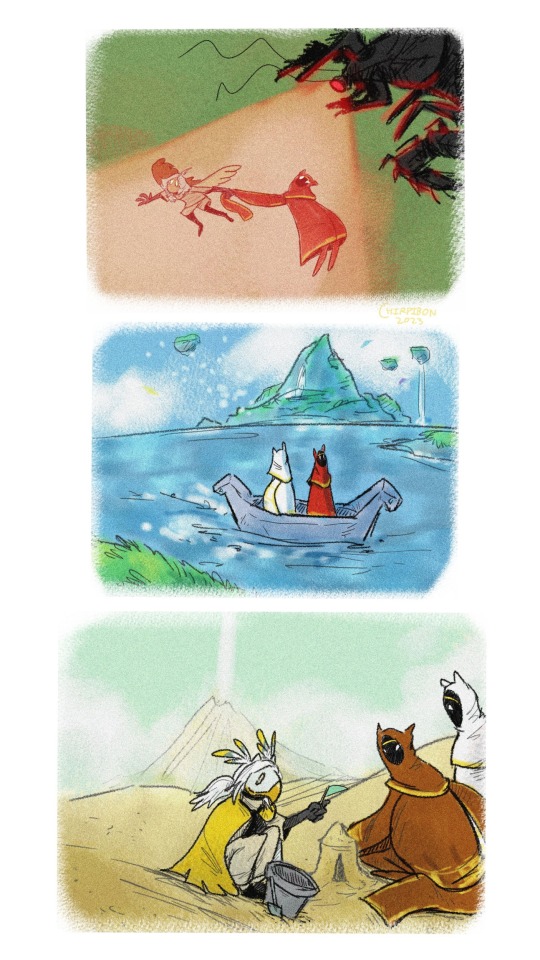
Since it was thatgamecompany's anniversary a few days ago, have some silly Journey x Sky doodles I made right after I finished Journey for the first time!
#ibon's art#fan art#digital art#sky children of the light#thatskygame#that sky game fanart#sky cotl fanart#sketch#art#artists on tumblr#journey#finished art#2023 art
376 notes
·
View notes
Text

Un rincón sereno donde puedes encontrar calma he inspiración. 🍃🌿
A serene corner where you can find calm and inspiration. 🍃🌿
#noctambulovisual#landscape#photographers on tumblr#wildlife#fotografía#photography#naturaleza#nature#ibon#huesca#pirineos
15 notes
·
View notes
Text
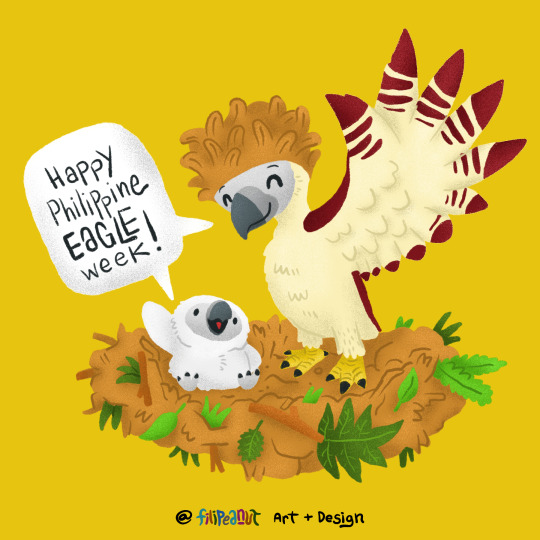
Happy Philippine Eagle week! Did you know Philippine Eagle nests can be up to 2 meters or 6.5 feet wide? And their wingspans can go up to 7 feet? They’re the biggest forest raptors in the Philippines, and one of the largest eagles in the world.
See more of my wildlife art at @philippinewildlifeart!
10 notes
·
View notes
Text
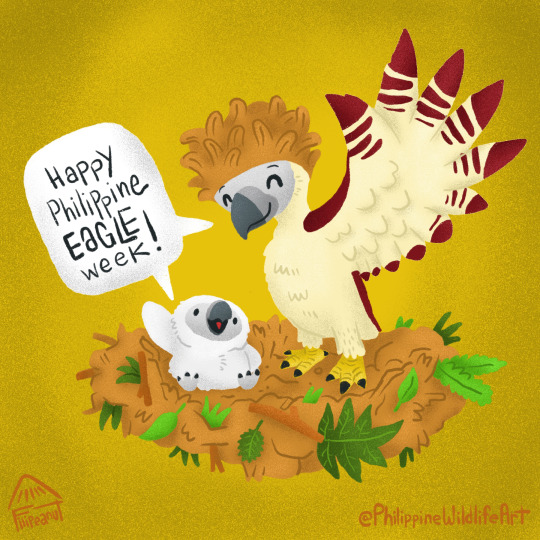
Happy Philippine Eagle week!
The week starts June 4 to 10 every year. Did you know a Philippine Eagle (Haring Ibon) nest can be as large as 2 meters wide in Mindanao? In Luzon nest sizes were found to be a bit smaller so far. Biologists think it might be a way Haring Ibon in Luzon adapt to typhoons.
See more art and trivia about Philippine Eagles: https://philippinewildlife.art/portfolio/philippine-eagle/
Or get free Philippine Eagle printables: https://phwildlifeart.gumroad.com/
Reference: TRC Abaño, et al., 2016. First nesting record of Philippine Eagle Pithecophaga jefferyi from Luzon, Philippines, with notes on diet and breeding biology
6 notes
·
View notes
Text

Butch be upon yee
#finni.art#my oc ibon#i wanted to do more to finish this but im so eeppy and have no ideas❤️❤️#anyways if i change it i guess ill just reblog with the new version
46 notes
·
View notes
Text
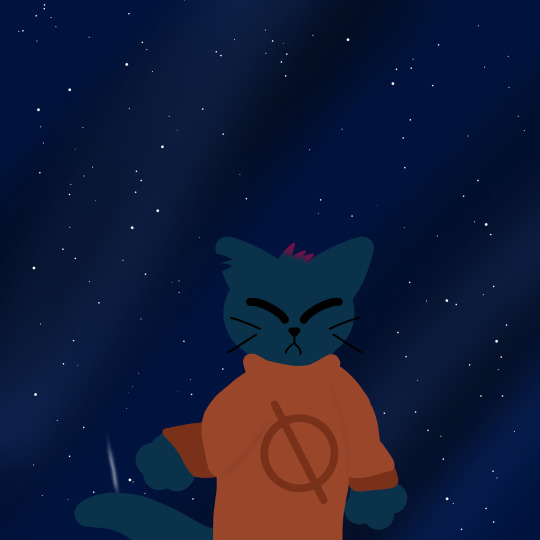
And I don’t understand why I sleep all day

And I start to complain that there’s no rain
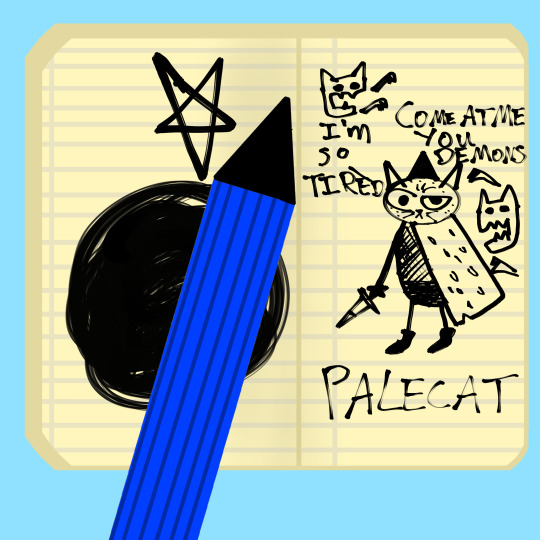
And all I can do is read a book to stay awake
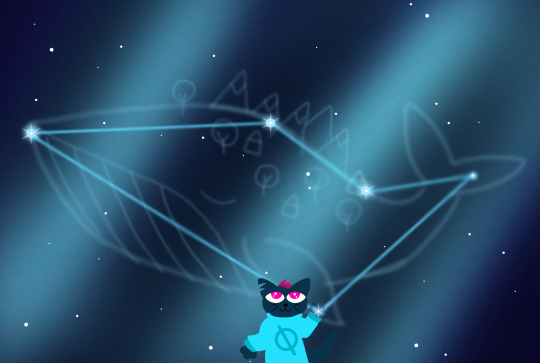
And it rips my life away but it’s a great escape
#Night in the Woods#Finji#Infinite Fall#Mae Borowski#Ibon#Mundy#constellations#Blind Melon#No Rain#FlowerBarrel Art
66 notes
·
View notes
Photo
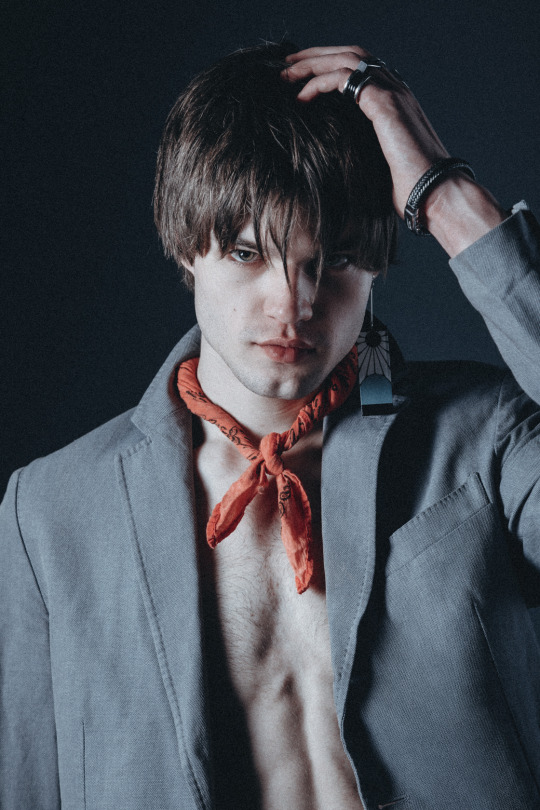
(vía Blue Blizzard: una editorial por Angel Ruiz con Ibon Altuzarra para Male Fashion Trends)
16 notes
·
View notes
Text

Robot Dreams (2023, Spain/France)
There exists an assumption that one has to be an animator in order to direct an animated film. While most cinephiles might reflexively point to Wes Anderson (2009’s Fantastic Mr. Fox, 2018’s Isle of Dogs), I think Isao Takahata (1988’s Grave of the Fireflies, 1991’s Only Yesterday) the exemplar here. Even so, a non-animator taking the reins of an animated movie is rare. Into that fold steps Pablo Berger, in this adaptation of Sara Varon’s graphic novel Robot Dreams. Moved after reading Varon’s work in 2010, Berger acquired Varon’s “carte blanche” permission to make a 2D animated adaptation however he saw fit. Like the graphic novel, Berger’s Robot Dreams is also dialogue-free.
Beginning production on Robot Dreams proved difficult. Berger originally teamed with Ireland’s Cartoon Saloon (2009’s The Secret of Kells, 2020’s Wolfwalkers) to make Robot Dreams, but these plans fell wayside when the COVID-19 pandemic hit. His schooling in how to make an animated film would come quickly. Despite an increased appetite for Spanish animation worldwide (2019’s Klaus, 2022’s Unicorn Wars), poor distribution and marketing of domestically-made animated movies has often meant Spanish animators have roved around Europe looking for work. With a pandemic sending those Spanish animators home, Berger and his Spanish and French producers set up “pop-up studios” in Madrid and Pamplona, purchased the infrastructure and space needed to make an animated feature, and recruited and hired animators. Berger’s admiration of animated film fuses the lessons of silent film acting (Berger made a gorgeous silent film in 2012’s Blancanieves; in interviews, Berger cites Charlie Chaplin’s movies as having the largest influence on Robot Dreams, alongside Takahata’s films) to result in one of the most emotionally honest films of the decade thus far – animated or otherwise.
Somewhere in Manhattan in the late 1980s in a world populated entirely of anthropomorphized animals, we find ourselves in Dog’s apartment. Dog, alone in this world, consuming yet another TV dinner, is channel surfing late one evening. He stumbles upon a commercial advertising a robot companion. Intrigued, he orders the robot companion and, with some difficulty, assembles Robot. The two become fast friends as they romp about New York City over a balmy summer, complete with walks around their neighborhood and Central Park, street food, trips to Coney Island, and roller blading along to the groovy tunes of Earth, Wind & Fire. At summer’s end, an accident sees the involuntary separation of Dog and Robot, endangering, for all that the viewer can assume, the most meaningful friendship in Dog’s life and Robot’s brief time of existence.
youtube
If you have not seen the film yet, let me address a popular perception early on in this piece. Set in a mostly-analog 1980s, Robot Dreams contains none of the agonizing over artificial intelligence or automatons in fashion in modern cinema. There is no commentary about how technology frays an individual’s connections to others. Robot is a rudimentary creation, closer to a sentient grade school science project than a Data or T-1000.
So what is Robot Dreams saying instead? Principally, it is about the loving bonds of friendship – how a friend can provide comfort and company, how they uplift the best parts of your very being. For Robot, the entirety of their life prior to the aforementioned accident (something that I, for non-viewers, am trying not to spoil as Robot Dreams’ emotional power is fully experienced if you know as little as possible) has been one of complete estival bliss. Robot, in due time, discovers that one of the most meaningful aspects of friendship is that such relationships will eventually conclude – a fundamental part of life. And for Dog, Robot’s entrance into his life allows him to realize that, yes, he can summon the courage to connect with his fellow animals, realizing his self-worth. Perhaps Dog gives up addressing the accident a little too easily, but the separation of friends has a way of complicating emotions and provoking peculiar reactions.
On occasion, Robot Dreams’ spirit reminds me of Charlie Chaplin’s silent feature film period (1921-1936) – in which Chaplin, at the height of his filmmaking prowess, most successfully wove together slapstick comedy and pathos. On paper, pathos and slapstick should not mix, but Chaplin was the master of combining the two. No wonder Berger fully acknowledges the influence of his favorite Chaplin work, City Lights (1931), here.
Across Robot Dreams, Berger inserts an absurd visual humor that works both because almost all of the characters are animals and despite the fact almost everyone is an animal. A busking octopus in the New York City subway? Check. The image of pigs playing on the beach while sunburnt to a blazing red? You bet. A dancing dream sequence where one of our lead characters finds himself in The Wizard of Oz performing Busby Berkeley-esque choreography on the Yellow Brick Road? Why not? Much of Chaplin’s silent film humor didn’t come from his Little Tramp character, but the silliness, ego, and/or absentmindedness of all those surrounding the Tramp. In City Lights, humor also came from the rough-and-tumble edges of urban America. Such is the case, too, in Robot Dreams, with its blemished, trash-strewn depiction of late ‘80s New York (credit must also go to the sound mix, as they perfectly capture how ambiently noisy a big city can be).
Amid all that comedy, Berger nails the balance between the pathos and the hilarity – pushing too far in either direction would easily undermine the other. The film’s melancholy shows up in ostensibly happy moments and places of recreation: a realization during a rooftop barbeque lunch, the emptiness of a shuttered Coney Island beach in the winter, and an afternoon of kiting in Central Park. It captures how our thoughts of erstwhile or involuntarily separated friends come to us innocuously, in places that stir memories that we might, in our present company, might not speak of aloud.
As the film’s third character, New York City (where Berger lived for a decade) is a global cultural capital, a citywide theater of dreams, a skyscraper-filled signature to the American Dream. To paraphrase Sinatra, if you can make it there, you can make it anywhere. But it tends to grind those dreams into dust. The city’s bureaucratic quagmire is lampooned here, as is its reputation for mean-spirited or jaded locals. Robot Dreams also depicts the visual and socioeconomic differences between the city’s boroughs. With such a jumble of folks of different life stations mashed together, Dog’s people-watching, er, animal-watching during his loneliest moments makes him feel the full intensity of his social isolation. With Robot, however, Dog has a naïve companion that he can show the best of the city to. Robot has no understanding of passive-aggressive or outright hostile behavior (see: Robot hilariously not understanding what a middle finger salute is – the only objectionable scene if you are considering showing this to younger viewers). Within this city of contradictions, Dog and Robot’s love is here to stay.
Though he is no animator, his experience in guiding Spanish actresses Ángela Molina, Maribel Verdú, and Macarena García in Blancanieves through a silent film was valuable. In animated film, there is a tendency towards overexaggerating emotions. But with Robot Dreams’ close adaptation of the graphic novel’s ligne claire style and the nature of Robot’s face, the typical level of exaggeration in animation could not fly in Robot Dreams. Berger and storyboard artist Maca Gil (2022’s My Father’s Dragon, the 2023 Peanuts special One-of-a-Kind Marcie) made few alterations to the storyboards, fully knowing how they wished to frame the film, and hoping to convey the film’s emotions with the facial subtlety seen in the graphic novel. Character designer Daniel Fernandez Casas (Klaus, 2024’s IF) accomplishes this with a minimum of lines to outline characters’ bodies and faces. Meanwhile, art director José Luis Ágreda (2018’s Buñuel in the Labyrinth of the Turtles) and animation director Benoît Féroumont (primarily a graphic novelist) visually translated Sara Varon’s graphic novel using flat colors and a lack of shading to convey background and character depth (one still needs shading, of course, to convey lights and darks of an interior or exterior).
Robot Dreams’ nomination for the Academy Award for Best Animated Feature this year was one of the most pleasant surprises of the 96th Academy Awards. In North America, Robot Dreams’ distributor, Neon, has pursued an inexplicable distribution and marketing strategy of not allowing the film a true theatrical release until months after the end of the last Oscars. The film was available for a one-night special screening in select theaters in and near major North American cities the Wednesday before the Academy Awards. And only now (as of the weekend of May 31, 2024), Neon will release Robot Dreams this weekend in two New York City theaters, the following weekend in and around Los Angeles, with few other locations confirmed – well after interest to watch the film theatrically piqued in North America.
Alongside Neon’s near-nonexistent distribution and marketing of Jonas Poher Rasmussen's animated documentary Flee (2021, Denmark), one has to question Neon’s commitment to animated features and whether the company has a genuine interest in showing their animated acquisitions to people outside major North American cities. This is distributional malpractice and maddeningly disrespectful from one of the most acclaimed independent distributors of the last decade.
In Robot Dreams, Pablo Berger and his crew made perhaps the best animated feature of the previous calendar year. Robot Dreams might not have the artistic sumptuousness of the best anime films today, nor the digital polish one expects from the work of a major American animation studio. By film’s end, its simple, accessible style cannot hide its irrepressible emotional power. Its conclusion speaks to all of us who silently wonder about close friends long left to the past, their absence filled only by memory.
My rating: 8.5/10
^ Based on my personal imdb rating. My interpretation of that ratings system can be found in the “Ratings system” page on my blog. Half-points are always rounded down.
For more of my reviews tagged “My Movie Odyssey”, check out the tag of the same name on my blog.
#Robot Dreams#Pablo Berger#Sara Varon#Fernando Franco#Daniel Fernandez Casas#Benoît Feroumont#José Luis Ágreda#Maca Gil#Ibon Cormenzana#Ignasi Estapé#Sandra Tapia Diaz#Best Animated Feature#Oscars#96th Academy Awards#My Movie Odyssey
2 notes
·
View notes
Text
1 note
·
View note
Text

" I noticed that you've been smiling more, Lucanis. "
" ...Have I? ...Si, I suppose I have been. "
#lucanis dellamorte#VERY happy w how this turned out#lucanis#dragon age veilguard#dragon age#the idea is that rook and lucanis went on a gondola ride in treviso and both of them are awful at steering it + it tipped over#but the two just look at each other and start laughing like heck#that being said feel free to read this as lucanis w other characters hehe i am 100% for lucanis being happy however way#lucanis x rook#ibon draws#artists on tumblr#the brainworms bc Lucanis is above water but also okay w being in the seawater after a year in the ossuary... i care him sm#veilguard spoilers#id in alt text#chat i love him i'm so cooked. spotify play thats amore#rookanis
4K notes
·
View notes
Text
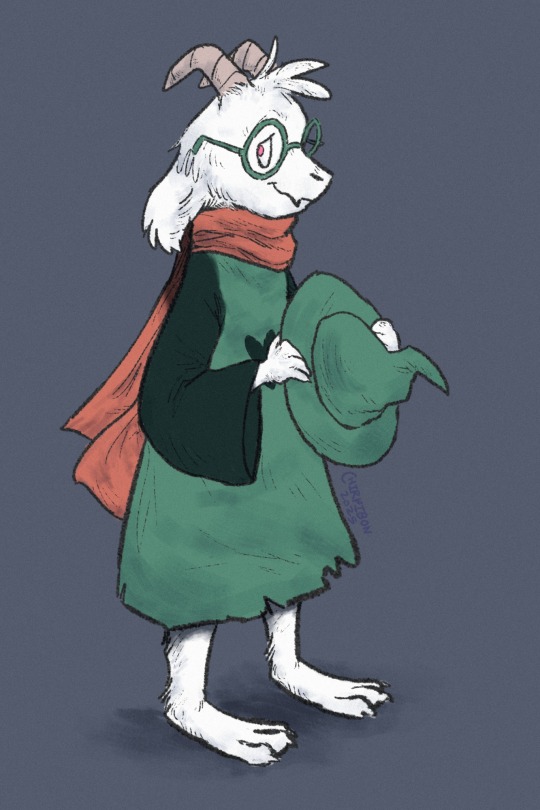
A bit late to the hype party but I drew this to celebrate the release of Chapters 3 and 4! Guess who my favorite character is.
#ibon's art#deltarune#deltarune fanart#fan art#ralsei#digital art#artists on tumblr#2025 art#now the race begins#to speedrun the game and avoid getting spoiled#also i have this silly lil' headcanon that some of ralsei's extra dark form shadows are manifestations of his 'prince of darkness' nature#i'd draw the whole fun gang but i lack the time
112 notes
·
View notes
Text
2 notes
·
View notes
Text

Last week Manuel Francisco of Radyo Magasin 1278 kHz contacted me for an interview on his show Green Mindset.
Since my Tagalog is still not where it should be, I politely declined and referred them to another artist. Manuel persisted and made me feel better about going with the interview, and now it's done!
I share a bit more about @philippinewildlifeart, as well as my art in collaboration with the Haribon Foundation, Raptorwatch Philippines, and more!
Watch the interview on Facebook! https://www.facebook.com/RadyoMagasin/videos/673803395637497
1 note
·
View note
Text
You ever do lineart and you just Know you're gonna go insane with the colors?

13 notes
·
View notes
Text

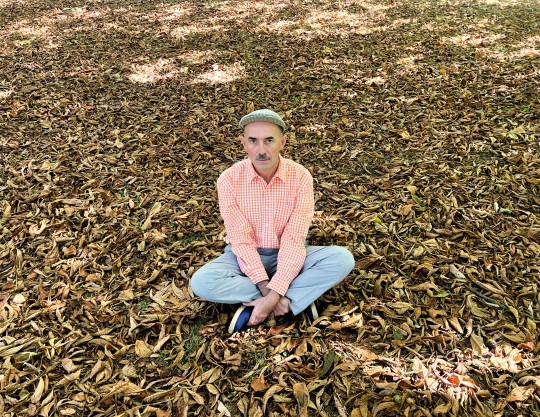
Hace unas semanas os traíamos “Claros Del Bosque”, el nuevo disco de uno de los artistas clave en Elefant Records: Ibon Errazkin. El antiguo miembro de AVENTURAS DE KIRLIAN, LE MANS y SINGLE ha vuelto a hacer un álbum exquisito y delicioso, de paisajística musical, igual que en “Foto Aérea”, su anterior trabajo. Resulta que, como ya os anunciamos, ocho de las diez canciones de “Claros Del Bosque” son partes de una pieza más extensa, de 61 minutos de duración, titulada “Nubes Y Claros”, que incluye más de media hora de música inédita. Verá la luz el próximo 14 de marzo en formato digital y estará disponible en las plataformas habituales.
Esta pieza da un nuevo sentido al disco, añade nuevas líneas melódicas y armónicas y, en su continuidad, crea una especie de línea narrativa de aliento musical que te arrastra a lo largo de su duración. Según el propio Ibon: “La idea que más me motivaba era la de componer una pieza extensa, un formato que me permitiera distribuir los sonidos casi como elementos espaciales; algo más parecido a pasear por un jardín (o recorrer con la mirada un jardín vertical) que a la escucha lineal de una pieza musical al uso”. Un trabajo apasionante, propio de un artista fuera de cualquier corriente, que él define como una divagación “inspirado por el efecto hipnótico que tienen determinadas experiencias: una composición de La Monte Young o una película de Jacques Rivette, por el simple hecho de ser largas”.
Pero esta pieza musical no viene sola. En un viaje a Tánger en 2024 que ya relatamos con motivo de los videoclips de “Claros Del Bosque”, Antonio Morales (director de numerosos cortos y de películas como “Marisa En Los Bosques” o “Miss Futuro”) y el director de fotografía Dani Lisón aprovecharon para grabar una serie de imágenes de Ibon deambulando por las calles de la ciudad a cámara lenta, a menudo rodeado de transeúntes, en una especie de walking meditation. El resultado de estas grabaciones es una película de 64 minutos que sirve como el hilo visual que conecta con el recorrido musical trazado por “Nubes Y Claros”, que, además, le da nombre al film. Es un homenaje al cineasta chino-malayo Tsai Ming-Liang, quien, desde 2014, ha rodado unas diez películas de distinta duración, conocidas como walker series, en las que su actor fetiche, Lee Kang-Shen, interpreta a un monje budista que se mueve lentamente por las calles de ciudades como Tai-Pei, Marsella o Washington.
Esta película se estrenará el 14 de marzo, a la vez que la pieza musical, en exclusiva en la plataforma Filmin. Nos hace una ilusión inmensa estrenarla en una plataforma que se caracteriza por su apoyo al cine de autor e independiente, una rara avis a nivel mundial.
Y, por supuesto, las portadas del disco y de la película son obras de Javier Aramburu, quien añade a los claros del bosque del disco anterior las nubes que acompañan a este. Una experiencia especial, un ejercicio musical para oyentes apasionados que disfrutan de cada nota, para cinéfilos que gozan de las experiencias audiovisuales diferentes y para amantes del arte en general, porque eso es lo que es “Nubes Y Claros”: arte.
0 notes